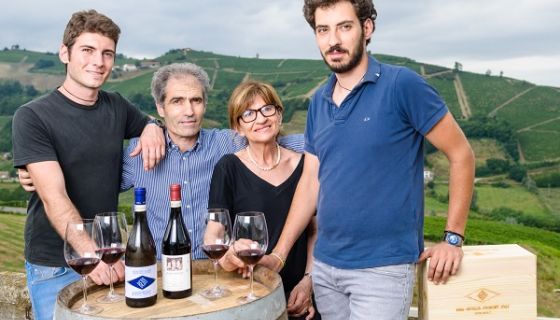From 11.80 Swiss francs, 280 Czech koruna, $14 (by the case only), 139 Swedish krona, €13.65, CA$24.20, £17.50, AU$28, HK$185
Background note: Walter and I must have had some kind of telepathic communication because a few days before he sent in his article on Asti, I’d asked Jancis whether she would mind if the last wine of the week 2018 was a Moscato d’Asti. I was a little worried that it might not provide the fireworks that the occasion demands, but she said yes. And then Walter's article arrived and not only was I delighted to have a fellow Asti fan, but he has done all the groundwork for me.
A lot of grand wines have probably been drunk over the past few weeks. Some you brought out of dark, coveted corners of the cellar, others chosen with barely concealed excitement (and a trembling bank card). Some would have stopped the conversation, others warmed it up. Maybe you lined the empty bottles up – memories pointing heavenwards, labels stained with a faint scent of the wine they held.
My offering is terribly humble. Because sometimes, after weeks of loftiness and probably quite a bit of excess, there is great relief in modesty. Plus, I think it’s the ideal companion to the New Year’s Day brunch.
The Bera family have been growing grapes for generations but Valter and Alida began bottling their own wine in the 1970s. Today, together with their sons Umberto and Riccardo (pictured above right), they farm 23 ha (57 acres) of vineyards organically. The Bera Moscato is hand picked from their own vineyards in September (a glass of the 2018 must is pictured below) and made with the Martinotti method. The finished wine has a residual sugar of 130 g/l, acidity of 6 g/l and just 5% alcohol.

This Asti takes me to summer, even on this cold, gloomy day. It’s jasmine, frangipani, old-fashioned roses, dianthus; it’s honeyed (you’re talking pale-gold spring-blossom honey), it’s apple nectar, it’s a nip of ginger root in syrup and a pin prick of clove. Tiny, tiny bubbles just prickle the mouth and get all that residual sugar into a congo-dancing line. It turns into poached oranges and pears as it draws to a close.
Of course, it’s Asti. We’re not talking cut-glass Mosel acidity or Tokaj complexity or demi-sec champagne richness and breadth. But it’s a wine that gives you almost the same sort of blissful delight as when a sleepy morning child wraps himself around you while you’re blearily getting the coffee on the stove. It makes you want to laugh and be a little silly and it reminds you that wine can bring you joy without having to be serious.
This is not the ice-queen elegant champagne you’re going to open with the pre-dinner New Year party canapés; not the serenely sophisticated wine you’re going to serve with the starters; not the magnificent specimen you’re going to bring out when the main course is borne into the dining room in sizzling triumph. And you’re most certainly not going to drink it when those midnight fireworks go off. But it is the wine you can get away with when you're having a slice of leftover panettone just before you have to haul yourself up off that sofa and get the oven on and start chopping. It’s the wine you can dice onions to with Annie Lennox belting out in the background, and the wine you can dance with your sister to around the kitchen table – narrowly avoiding hot pans and Lego – while Starship bellows about building a city on rock and roll. Or maybe that just happens in my house at New Year.
But most of all, this is a brunch wine. It’s the liquid equivalent of the most deliciously ripe slice of melon drizzled with honey. It would go with honey on a hot buttery muffin or a slice of French toast; it would go with flaky croissants or Danish pastries; it would work with a bowl of berries or Bircher museli or ripe figs in Greek yogurt. It would be delicious with bacon and pancakes. I’d even be so reckless as to say, drink it with a Full English. You could kick off brunch any day with this, but it will put a special sparkle into the first day of 2019.

Bera Moscato d’Asti 2017 is available in Italy, Switzerland, the Czech Republic, USA, UK, Sweden, Canada, Australia, Hong Kong and Ireland. The 2016 is also available in France, but I see that Walter recommends you drink the youngest vintage available.













